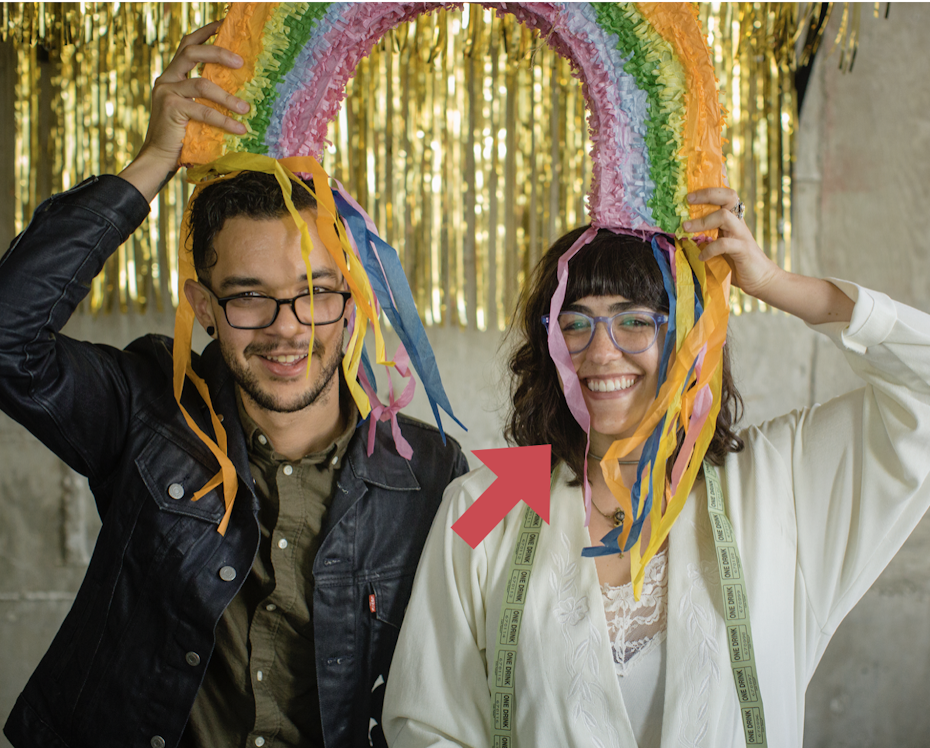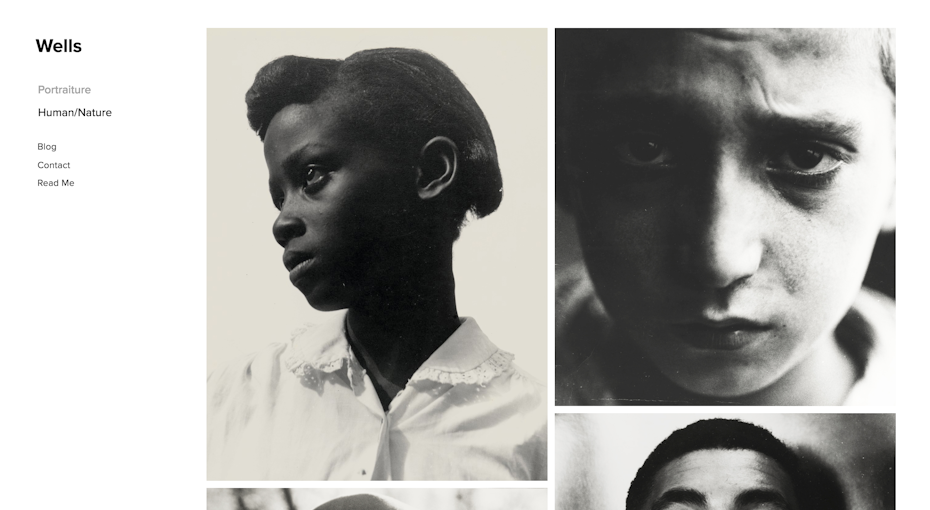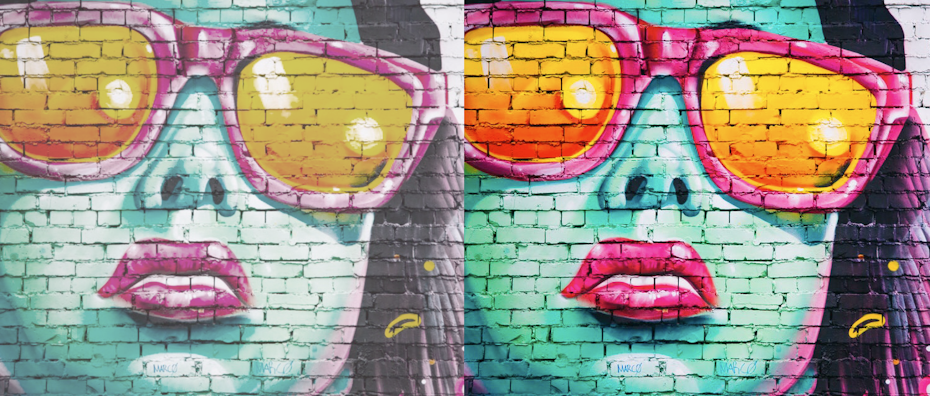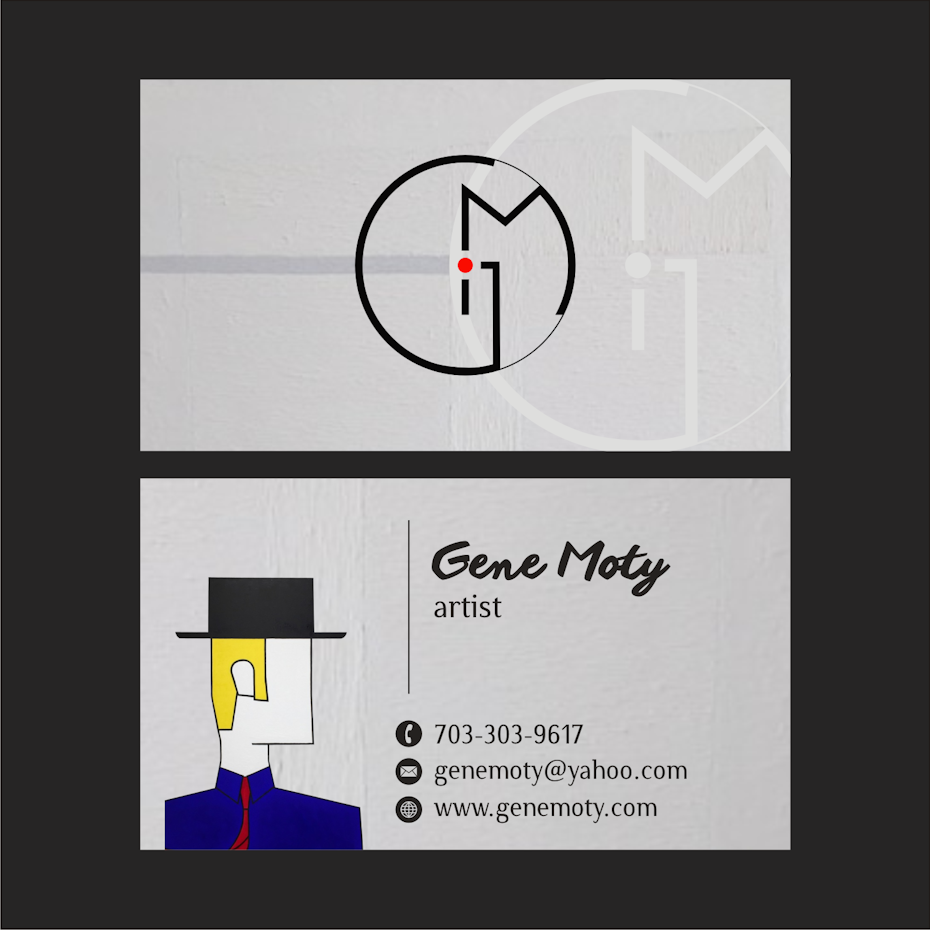Can Graphic Design Be Considered Fine Art
Artists and graphic designers work in two very different fields. Ask any of them, and they'll tell you that's pretty obvious. Art is all about expressiveness and self-guidance, while graphic design is functional and commonly used for commercial purposes.
Nearly every major creative publication points out these differences, usually to claim one is better than the other. But these discussions fail to mention that there's huge potential for a symbiotic relationship between artists and designers.

I've worked for 99designs for nearly three years, and I'm also an artist (many other 99designs employees are, too). I started here as an intern in 2015 while I was an art student at UC Berkeley.
Now that I've graduated and work full-time, I spend all of my free time (and paycheck) making paintings in my tiny but mighty studio. Working at 99designs hasn't been your average humdrum artist day job, though. It's influenced and expanded my art practice by exposing me to the world of design.

I've come to recognize the importance of maintaining a working knowledge of design and developing professional relationships with graphic designers to supplement my art practice. Why? Personal branding is crucial for any creative entrepreneur, visuals artists included.
Having a professionally-designed portfolio, business cards and other brand assets can help young artists boost their sales, visibility and professionalism without the help of a major gallery.
Let's dive into the kinds of projects that artists and graphic designers can do together and how you can collaborate with your creative counterpart without butting heads.
Art and graphic design: what are they?
—
In order to understand how artists can use graphic design, let's clarify what each discipline really is.
Art
What comes to mind when you think about art?
Art evokes the mystery without which the world would not exist.
Most likely, you're somewhere in the realm of Pablo Picasso paintings, museums, large three-dimensional works and kooky palette-bearing, beret-wearing people. OK, maybe that last one's a stretch, but you get the point.
But, there is no singular definition.
Art is the subjective, individual interpretation of thoughts, emotions and events expressed through aesthetic means like painting, sculpture, drawing, photography, ceramics and more.
Graphic design
Now, what comes to mind when you think about graphic design?
Design in the absence of content is not design, it's decoration.- Designer Jeffrey Zeldman
Probably a computer, Adobe software, famous logos like Apple and Nike, and 99designs itself, the graphic design platform you're hanging out on right this second.
Graphic design involves communicating ideas and experiences with images, words or graphics both physically and digitally. Designers tell stories through posters, advertisements, packages, books, magazines and brand identities for companies.
When can artists and graphic designers work together?
—
Many artists are designers, and many graphics designers are artists. But very few artists and graphics designers are one in the same at the same time.
Be aware of what you can do yourself as an artist and what a professional graphic designer can help with. Remember: your time is better spent as an artist in the studio than it is messing around with Photoshop. And even if you've got Rembrandt-level painting skills IRL, those skills might not translate to the screen.
Here are the main areas that artists can get some help from graphic designers:
Web design
Your website is, hands-down, the most important asset—no matter what level of artist you are. Don't wing it.

In art school, all seniors (myself included) took a Professional Practices class before we graduated to prepare us to be working artists in the "real world." Part of the class consisted of building an online portfolio, and nearly all of the students used the same drag-and-drop Wells theme from Squarespace.
How will you stand out in open calls if your portfolio looks exactly like all the other applicants? You won't.
Outside of your studio itself, your website is your main opportunity to present your work to the world. Work with a graphic designer to develop a custom web design that does justice to the body of work you've spent so much time perfecting.
Your website should:
- Reflect who you are as an artist. Your custom design should reveal your personality and taste.
- Represent your work accurately and beautifully. Your site layout should match the kind of work you're presenting and properly scale it with different image gallery layouts.
- Give all the necessary information. Your website should include all the necessities (artwork, artist statement, CV, contact form) without looking cluttered.
- Be intuitive and easy to navigate. Your layout needs to make sense for your content. Your designer can respond to the intricacies of your work much better than a template ever can.

While you're working with a designer on your custom web layout, take advantage of the chance to have your designer touch up any images you're presenting on your site so they look their best.

Logo design
Your name is your enterprise as an artist. What does it say about your enterprise if your name is written in Times New Roman on all your marketing collateral?
Work with a designer to develop a logo that suits your aesthetic. Your logo should live on your website, resume, business cards, social media profiles, and any other branded assets such as press releases and email newsletters.
A wordmark is probably your best bet so it can exist side-by-side with your artwork without clashing; however, discuss with your designer which type of logo will work best for you.
Business cards
So, you're at a gallery opening and shmoozing with other professionals. A curator you're speaking with is interested in your art and wants to stay in touch. Instead of clumsily typing your number into their phone, you hand them a beautiful business card that confirms your professionalism and prompts them to stay in touch.
Business cards are a great way to boost visibility as an artist. Even if you're not actively networking, there will always be times when you meet somebody and want to give them your contact information.

Your business card should:
- Include all the necessary information (name, website, email, etc.)
- Give a visual indicator about your work
- Be presented in a format that suits your style. You can stick with the typical rectangular card, or be more inventive with a unique shape or material to print on.
Make your design decisions with the help of an expert who can manipulate the layout to fit your desired card format and printing costs.
Marketing collateral
Every artist knows shameless self-promotion is a part of the game. Enlist the help of a graphic designer to create flyers and other marketing collateral that promote upcoming exhibitions, open studios, and events.
Think of these flyer designs as keepsakes you are offering to your viewers. They're bigger in scale than business cards, making them ideal to pin up on walls and desks, but only if they're designed well.
Once you've built up an email list, start sending digital flyers to your contacts, too. Instead of having two separate designs, save money by repurposing your custom flyer into an email before a big show or event.
Artist's books
This is a fun one. Artist's books are a fun and effective way to share your artwork, writing and projects in an accessible format. They're also the perfect opportunity to collaborate with a graphic designer.
While you're responsible for creating the book's content, collaborate with a brilliant book designer on layout and cover design to make sure everything is good-looking and print-ready. The end product will be something you can each display proudly in your portfolios.
How to collaborate with other creatives
—
You shouldn't try to be a Jack-of-all-Trades when it comes to your branding, but that's easier said than done. When you're a creative person yourself, and you take pride in your craftsmanship, it can be difficult to take the backseat and put your creative vision in the hands of another.
Having worked with many designers on 99designs, here are the best ways to start a creative collaboration:
Find a designer you can work with
Creatives are known to have big personalities—and that's a good thing! But that doesn't make collaboration easy.
Treat finding a graphic designer like finding an artistic collaborator. After all, you might actually wind up working with them long-term. Find a designer with skills in your needed areas, with an aesthetic style that compliments yours and with a personality you like.
Write a brief that's clear but open to interpretation
You have your artistic vision, and designers have theirs. Projects are more fun for designers when they're able to express their preferred style, which is why it's also so important that you find a designer whose style compliments your own.
In order to write a brief that doesn't bind designers to your singular vision, only specify your "must-have" elements. Note what type of logo you want (wordmark? emblem? combination mark?) and whether you want color or black-and-white. Provide a few visual examples of other designs you like as a starting direction, and leave the rest up to your designer.
Not only does this often lead to a stronger design in the end, it also shows you trust your designer, which is key for developing a solid professional relationship.
Credit your graphic designer
Although you're not required to, it's good practice to credit your graphic designer when you can. Don't include your designer's name on your business card, but consider crediting them on the footer of your website. It's good creative karma, and it also shows that you've put the energy into developing a custom site, which boosts your professionality.
Pay fairly
This one should be a no-brainer. As an artist you know how hard it is to get the prices you deserve when friends and family are asking to buy pieces for the cost of a cheap meal.
Ask your graphic designer about their rates from the get-go and respect them. It's OK to negotiate, but remember that as an artist, time is money. Your designer deserves a fair wage, too.
If you don't have the funds to pay a designer just yet, consider a creative exchange. You can offer your designer a custom piece of artwork (if they're in the market for it) in exchange for a service of equivalent value. Always make sure both parties are getting a fair deal.
Artists and graphic designers: the perfect match
—
Think about the upcoming projects you have on your plate, and I'm sure you can find a few opportunities to collaborate with graphic designers.
Not only will this make your workflow faster and more efficient, but it's also an opportunity to support other artists. In the name of uniting the two disciplines that are responsible for making our world brighter, more creative and more beautiful, find a designer and get going!
Want to find a designer who's a perfect match to your artistic style?
Browse thousands of portfolios at once.
Can Graphic Design Be Considered Fine Art
Source: https://99designs.com/blog/art-illustration/artists-and-graphic-designers/
0 Response to "Can Graphic Design Be Considered Fine Art"
Postar um comentário